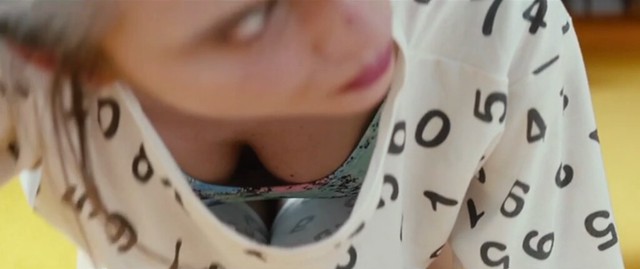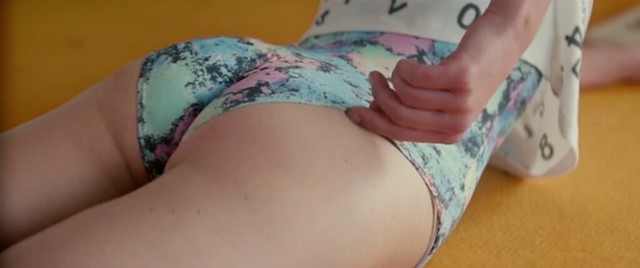NEW YORK, United States — “There’s a new kind of streetwear emerging and you can see it in brands like Hood By Air,
Off-White, Pyrex and Pigalle,” Marcelo Burlon, founder of
multi-category streetwear business County of Milan, told BoF columnist Susanna Lau last month.
Since its early days, the term “streetwear” has grown to encompass
companies ranging from Stussy — a $35 million brand founded by designer
Shawn Stussy amidst the surfing and skateboarding culture of Laguna
Beach, California, swiftly embraced by the hip-hop scene and later sold
in major department stores — to the venture-backed, multi-channel retail
giant Karmaloop, which generated $130 million in revenue in 2011 (the
last year for which figures were released by the privately-held
company). The category is known for taking simple items like baseball
caps, graphic t-shirts and varsity jackets and transforming them into
branding tools for young kids looking to assert a visual identity.
As a result, Shayne Oliver — founder and designer of Hood By Air,
which blends bold graphics, striking silhouettes and high-fashion
elements borrowed from designers like Raf Simons
and Helmut Lang — resents the term “streetwear,” which he feels can
have juvenile and overly commerical connotations. “I feel like there’s
something demeaning about it, like, ‘Oh, that’s streetwear,’”
he says. But others amongst the new wave, like Burlon, see their roots
in companies like Stussy. “Shawn Stussy is a very inspiring person who
somehow opened a door for a group of creatives people that influenced
all of us. The mindset and the similarities that we share keep growing
as the years pass and stay contemporary through time.”
Stussy’s references often came from high fashion brands, like Rei Kawakubo’s Comme des Garçons and, most famously, Chanel.
Some of the brand’s most enduring designs are self-aware
reinterpretations of Chanel’s iconic interlocking C’s (replaced with two
S’s) and signature fragrance (a minimal graphic that reads “Stussy No.
4”). But, crucially, the label filtered high fashion through the unique
lens of subculture, blending the feel of an exclusive brand with a
distinct type of cool, exhibited through graphic prints, wardrobe
staples and a rough-around-the-edges authenticity.
It became a powerful formula that influenced future tastemakers like
Hiroshi Fujiwara, who began Goodenough and Fragment Design; Nigo, who
would establish A Bathing Ape; and former Stussy shop manager James Jebbia,
who, in 1994, would found seminal New York clothing brand Supreme.
“When Supreme came around, streetwear was something that people could
covet,” allows Oliver. “It was like: ‘Yo, this is what we are. We’re
here making clothes for the street — for us.’”
As the first generation of streetwear brands grew in popularity, it
wasn’t just the aesthetics of high fashion brands that inspired them.
They also began to employ luxury-like strategies of exclusivity and
scarcity to generate demand for their products. Special products
sometimes sold out the same day they were released, generating hype and
eventually leading to the snaking lines often seen outside Supreme
stores on the day highly-anticipated collections or collaborations are
set to drop. “Limited-edition things were king and products were treated
like: ‘There’s only a hundred of these and they’re numbered,” remembers
Virgil Abloh, designer of Off-White. Some of the labels he lauded at
the time were Crooks and Castles, Alife and Nom De Guerre. “I directly
pay homage to all those, because those are the brands I grew up on.” But
the currency of cool is forever fluctuating. “The taste of now is more
of mixing high-low; it’s more iconic and cool to wear a Louis Vuitton bag with a Supreme t-shirt,” observes Abloh. “Celiné and [Nike] Air Force 1’s look cool, but there’s a design mentality around that, which I’m trying to be a part of.”
Perhaps no boutique better reflects how much the market for
streetwear has evolved than Union. Founded back in 1989 in New York’s
(then gritty) Soho by James Jebbia and Mary-Ann Fusco, the store stocked
labels with subculture appeal, like Duffer of St. George and Pervert.
“Over the past 25 years, the scene has matured and now you can see its
influence in every pocket of fashion from streetwear — straight, no
chaser — to men’s contemporary to high fashion,” observed Chris Gibbs,
Union’s current owner.
Gibbs thinks there’s a cult appeal to brands like County of Milan,
Hood By Air and Off-White, which don’t just sell clothes that fit, but
unique messages and identities that consumers can align with. “You can
get the same style of garment — or pretty damn close to it — from a lot
of different designers,” he points out. “People end up picking the
brands — really lifestyles — that they’re down with, and ride with
them.”
“Each of us created his own unique world and vision,” says Burlon.
“It’s not like a cult-y thing. It’s more of a network. A cult is like,
very secretive, and this is more of a network of ideas,” reflects
Oliver. Abloh adds: “Marcelo, myself, and Shayne have a certain kind of
mindshare.”
Alongside their interests in subcultures, Oliver, Burlon and Abloh
share a passion for music and nightlife, and all three lead parallel
lives as globe-hopping DJs. “[We have] different tribes, different
principles, but they’re all rooted in culture,” says Abloh.
The immediacy of the Internet and the instant access to inspiration
that platforms like Tumblr can provide have also shaped all three
designers. “The Internet helps us be connected to the past and to the
history,” says Burlon. “What better way to make something than converge
new ideas with something that has history,” adds Abloh.
But it isn’t just about unearthing the old, insists Oliver. “It’s not
like we’re like trying to like trigger people’s memories or link
ourselves to some sort of past message. It’s meant to be fresh, you
know?” He compares it to playing a Dolly Parton song in the middle of
one of his DJ sets as opposed to a Dolly Parton song playing at a
country music night. By artfully reintroducing the old, it feels
subversively new.
But do these new upstarts have the potential to grow like Stussy or Supreme?
“It’s one of those funny things: The generation behind it is always
gonna try to overthrow the one that’s in front of it. I just hope that
we do live up to the James Jebbias and the Shawn Stussys,” says Abloh.
“It’s sort of our duty to pick up after the all the streetwear legends.
It’s a glimmer. I don’t think it’s real yet.” Abloh declines to reveal
Off-White’s current revenue, but says the company is “meeting goals.”
Its website currently lists 31 stockists. Burlon’s County of Milan
boasts over 250 stockists. Meanwhile, Hood By Air is currently sold at
90 retailers.
Oliver believes that a market for this new guard exists, but it’s
less about “streetwear” and more about a unique blend of meaning and
accessibility. “Just because it’s a t-shirt just doesn’t mean it’s
automatically in the context of streetwear,” he says. “Everyone wears
t-shirts and that’s why I started a t-shirt line.”
But accessibility is relative. Hood By Air’s Classics t-shirts sell
for $110 to $190; Off-White’s “Caravaggio” t-shirt retails for $305;
Marcelo Burlon’s t-shirts sell for about $290. In contrast, the average
t-shirt from a brand like Stussy or Supreme hovers between $26 and $45.
Burlon says it’s a combination of high-end product, scarcity,
celebrity association (fans of County of Milan include the rappers Pusha
T and Drake, as well as NBA player LeBron James) and independent spirit
that “make the sense of luxury” — and justify the prices.
“Ultimately, we’re independents and that means we’re playing our own
game, without any type of rules or restrictions. I think people feel
that and they recognise themselves in this process.”




